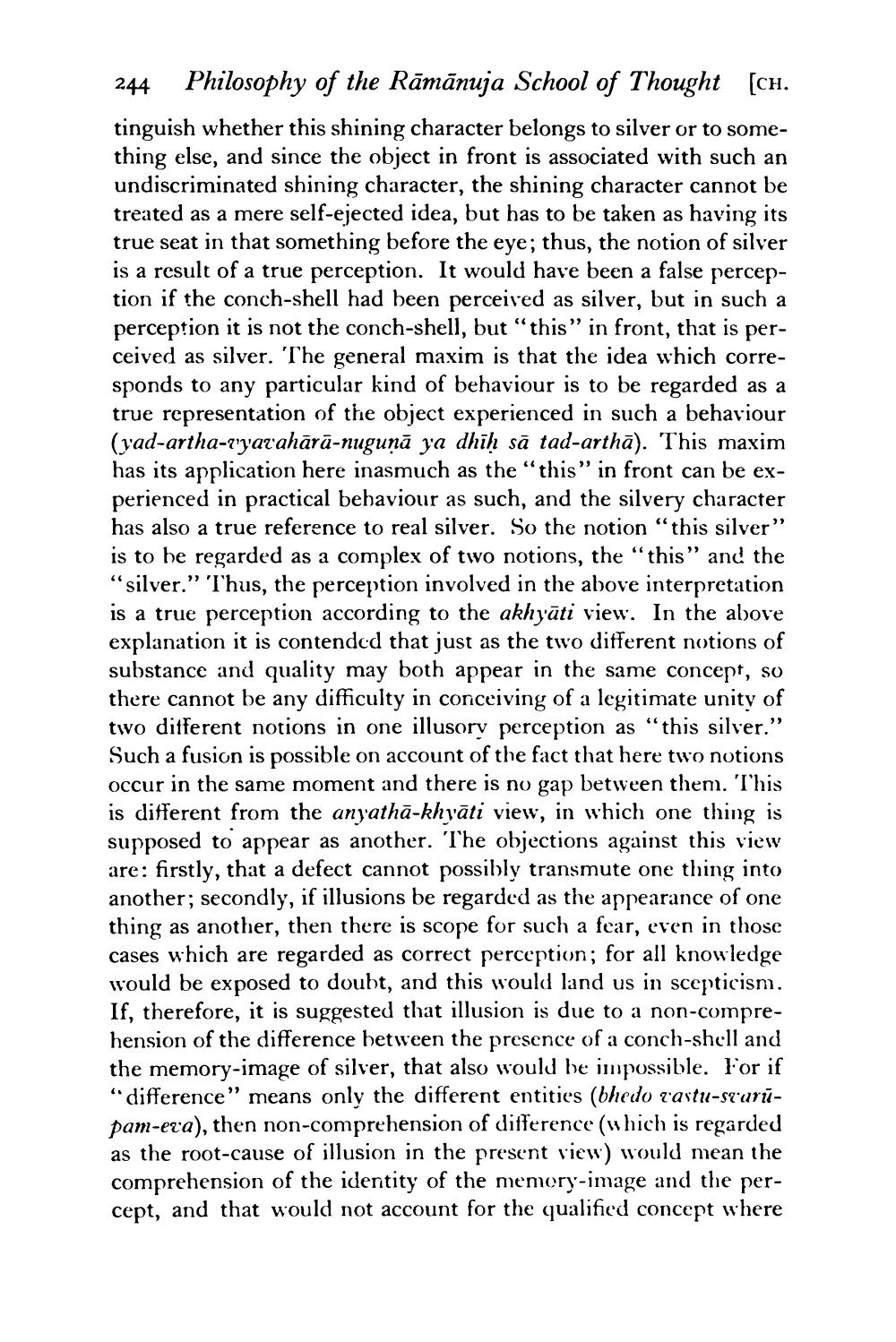________________
244 Philosophy of the Rāmānuja School of Thought (ch. tinguish whether this shining character belongs to silver or to something else, and since the object in front is associated with such an undiscriminated shining character, the shining character cannot be treated as a mere self-ejected idea, but has to be taken as having its true seat in that something before the eye; thus, the notion of silver is a result of a true perception. It would have been a false perception if the conch-shell had been perceived as silver, but in such a perception it is not the conch-shell, but “this" in front, that is perceived as silver. The general maxim is that the idea which corresponds to any particular kind of behaviour is to be regarded as a true representation of the object experienced in such a behaviour (vad-artha-ryarahārā-nugunā ya dhiḥ sā tad-arthā). This maxim has its application here inasmuch as the "this" in front can be experienced in practical behaviour as such, and the silvery character has also a true reference to real silver. So the notion “this silver” is to be regarded as a complex of two notions, the "this" and the “silver.” Thus, the perception involved in the above interpretation is a true perception according to the akhyāti view. In the above explanation it is contended that just as the two different notions of substance and quality may both appear in the same concept, so there cannot be any difficulty in conceiving of a legitimate unity of two different notions in one illusory perception as “this silver.” Such a fusion is possible on account of the fact that here two notions occur in the same moment and there is no gap between them. This is different from the anyathā-khyāti view, in which one thing is supposed to appear as another. The objections against this view are: firstly, that a defect cannot possibly transmute one thing into another; secondly, if illusions be regarded as the appearance of one thing as another, then there is scope for such a fear, even in those cases which are regarded as correct perception; for all knowledge would be exposed to doubt, and this would land us in scepticism. If, therefore, it is suggested that illusion is due to a non-comprehension of the difference between the presence of a conch-shell and the memory-image of silver, that also would be impossible. For if "difference" means only the different entities (bhedo rastu-starupam-eva), then non-comprehension of difference (u hich is regarded as the root-cause of illusion in the present view) would mean the comprehension of the identity of the memory-image and the percept, and that would not account for the qualified concept where




